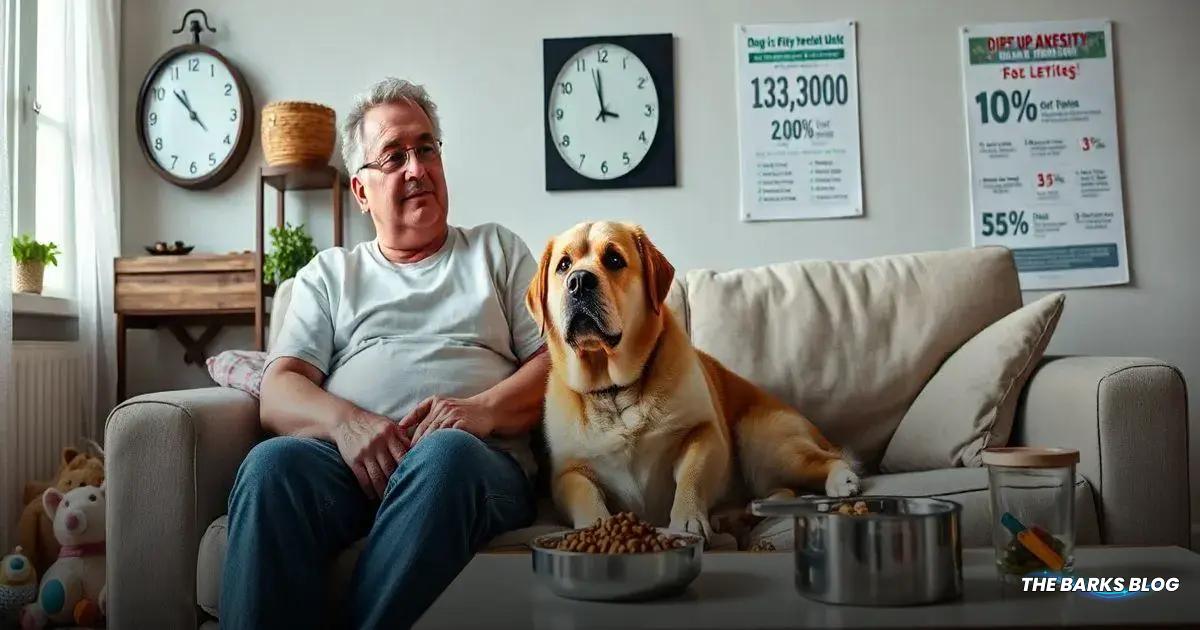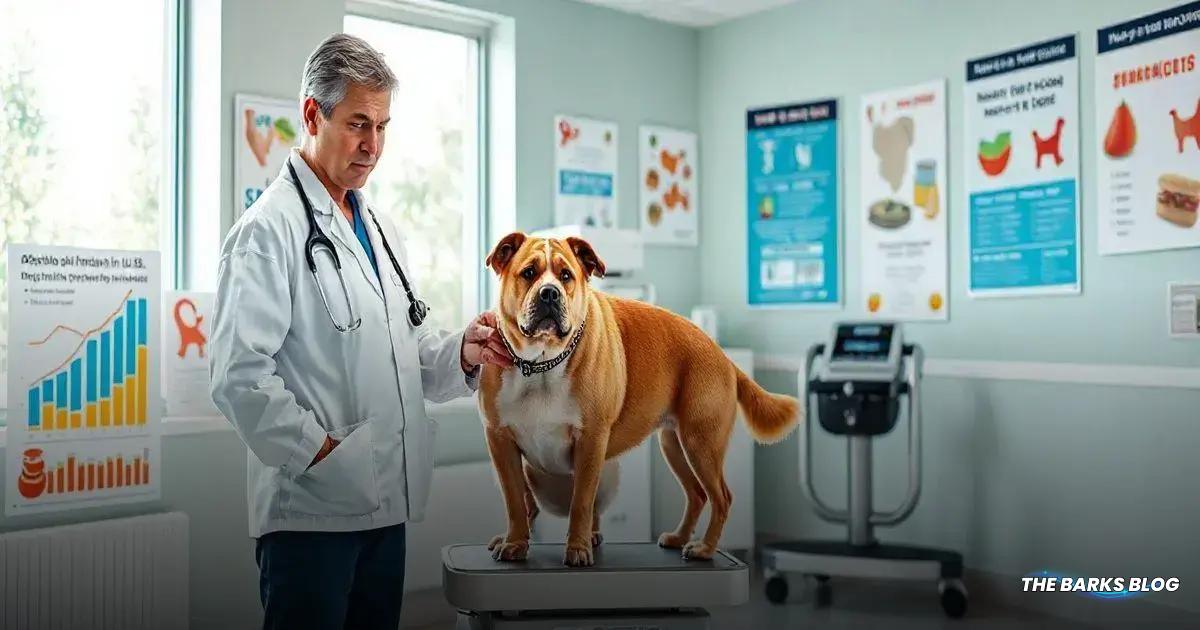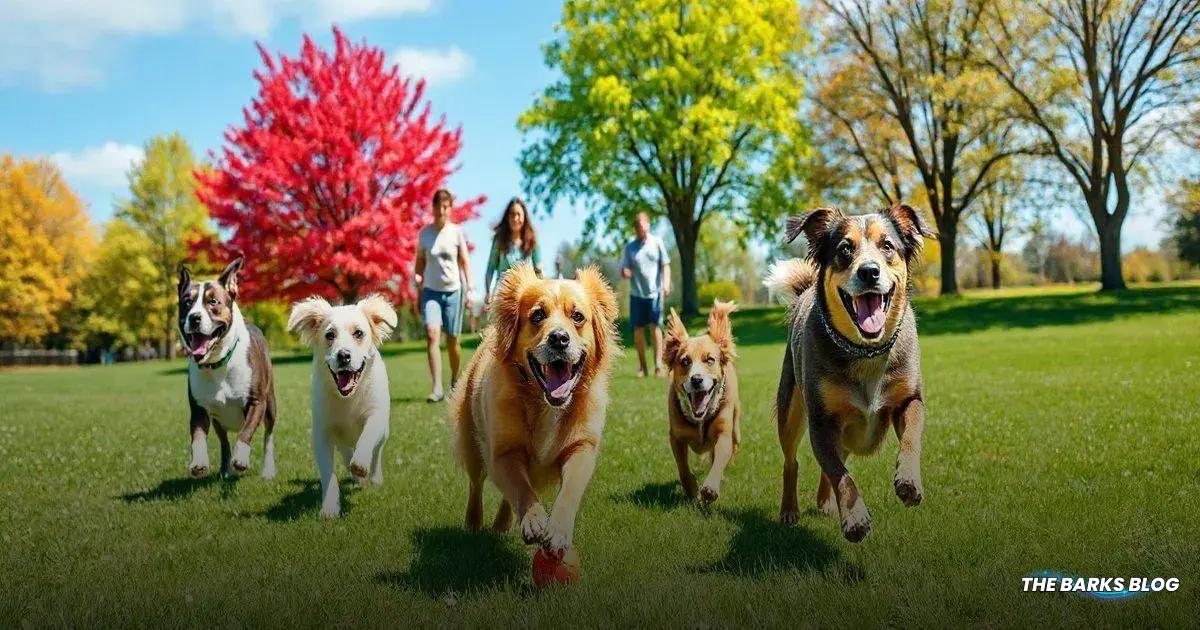Dog obesity is a serious health issue affecting over 50% of dogs in the U.S., leading to risks like diabetes and heart disease. To determine if your dog is overweight, assess their body condition and activity levels. Effective weight loss strategies include portion control, selecting appropriate food, and ensuring regular exercise, which also supports cardiovascular health and mental well-being. Prioritizing your dog’s weight management can significantly improve their quality of life.
A staggering 56% of dogs in the United States are overweight or obese, according to the Association for Pet Obesity Prevention. This alarming statistic highlights the importance of addressing dog obesity to improve your pet’s health.

Understanding Dog Obesity
Understanding Dog Obesity
Dog obesity is more than just a cosmetic issue; it’s a serious health concern that can lead to various long-term problems. Just like humans, dogs can become overweight due to a combination of factors, including diet, lifestyle, and genetics. The Association for Pet Obesity Prevention reports that over half of the dogs in the United States are classified as overweight or obese, which is quite alarming.
So, what exactly causes this condition? One of the primary culprits is an unbalanced diet. Many commercial dog foods are loaded with fillers and carbohydrates that can contribute to weight gain. Additionally, many pet owners often overfeed their dogs, either by misinterpreting serving sizes or by giving in to those adorable puppy dog eyes begging for treats.
Another significant factor is a lack of exercise. Dogs need regular physical activity to maintain a healthy weight. A sedentary lifestyle, often seen in dogs that spend too much time indoors or don’t get enough walks, can lead to weight gain. Furthermore, age plays a role; as dogs get older, their metabolism slows down, and they may not be as active, making it easier for them to pack on the pounds.
It’s crucial to recognize that obesity can lead to severe health issues, including diabetes, heart disease, joint problems, and a reduced lifespan. Understanding the underlying causes of your dog’s weight gain is the first step in helping them achieve a healthier lifestyle. By addressing their diet, ensuring they get enough exercise, and consulting with a veterinarian, you can help your furry friend shed those extra pounds and lead a happier, healthier life.

Signs Your Dog is Overweight
Signs Your Dog is Overweight
Identifying whether your dog is overweight can sometimes be tricky, especially if they have a thick coat or if you’re used to seeing them every day. However, there are several signs you can look for to help determine if your furry friend is carrying extra weight.
One of the most straightforward ways to assess your dog’s weight is by checking their body condition. You should be able to feel your dog’s ribs without pressing too hard. If you can’t feel their ribs or if they are buried under a layer of fat, it’s likely your dog is overweight. Additionally, you should be able to see a slight waist when looking at your dog from above. If their body appears more rounded and lacks that defined waistline, it’s a red flag.
Another sign to watch for is your dog’s activity level. Overweight dogs often show a reluctance to engage in play or exercise. If your dog seems to tire quickly during walks or is less enthusiastic about their favorite activities, this could indicate that their weight is affecting their mobility and overall well-being.
Pay attention to their movements as well. If you notice your dog is moving slower than usual or showing signs of joint discomfort, this may be due to the excess weight putting strain on their joints. Look for signs like limping, difficulty getting up, or hesitance to jump or climb stairs.
Lastly, keep an eye on their eating habits. If your dog is constantly begging for food or acting as if they are always hungry, it could be a sign that their diet is not meeting their nutritional needs, leading to overeating and weight gain.
If you suspect your dog may be overweight, it’s essential to consult with your veterinarian. They can provide a proper assessment and help you develop a plan to get your dog back to a healthy weight.

Health Risks of Obesity in Dogs
Health Risks of Obesity in Dogs
Obesity in dogs is not just a matter of aesthetics; it poses serious health risks that can significantly impact your pet’s quality of life and longevity. When a dog carries excess weight, it can lead to a myriad of health complications, some of which can be life-threatening.
One of the most concerning issues associated with obesity is the increased risk of developing diabetes. Just like in humans, excess body fat can lead to insulin resistance, making it difficult for your dog to regulate blood sugar levels. This condition requires lifelong management and can severely affect your dog’s health.
Another major risk is joint problems. The added weight puts extra stress on your dog’s joints, leading to conditions such as arthritis. Overweight dogs often experience pain and discomfort, which can limit their mobility and overall enjoyment of life. This can create a vicious cycle where the pain leads to less activity, resulting in further weight gain.
Heart disease is also a significant concern. Obesity can lead to high blood pressure and increased cholesterol levels, both of which put your dog at risk for heart disease. A healthy weight helps maintain proper heart function and reduces the strain on your dog’s cardiovascular system.
Moreover, obesity can affect your dog’s respiratory system. Extra weight can make it difficult for dogs to breathe, especially during physical activity. This can lead to conditions like obesity hypoventilation syndrome, where the dog struggles to get enough oxygen, particularly when they are asleep.
Lastly, overweight dogs are at a higher risk for certain types of cancer. Studies have shown that obesity can increase the likelihood of developing tumors in various organs, which can be both painful and challenging to treat.
In summary, maintaining a healthy weight is crucial for your dog’s overall well-being. Regular check-ups with your veterinarian, a balanced diet, and exercise can help mitigate these risks and ensure your furry friend lives a long, healthy life.

Weight Loss Tips for Dogs
Weight Loss Tips for Dogs
If your dog is overweight, implementing effective weight loss strategies is essential to help them shed those extra pounds and improve their overall health. Here are some proven tips that can guide you in the right direction:
1. Consult Your Veterinarian: Before starting any weight loss program, it’s crucial to consult with your veterinarian. They can assess your dog’s current health, determine their ideal weight, and create a personalized weight loss plan tailored to your dog’s specific needs.
2. Control Portions: Portion control is vital. Measure your dog’s food using a measuring cup to ensure they are getting the right amount. Avoid free-feeding, where food is left out all day, as this can lead to overeating. Instead, establish a regular feeding schedule and stick to it.
3. Choose the Right Food: Opt for high-quality dog food that is lower in calories but still provides essential nutrients. Look for foods that are high in protein and fiber, which can help your dog feel full without consuming excess calories. Avoid foods with fillers and artificial ingredients.
4. Increase Physical Activity: Regular exercise is key to weight loss. Aim for at least 30 minutes of exercise every day, whether it’s walking, playing fetch, or engaging in other fun activities. Gradually increase the intensity and duration of workouts as your dog becomes more fit.
5. Healthy Treat Alternatives: Instead of high-calorie treats, consider healthier alternatives such as carrot sticks, apple slices (without seeds), or green beans. You can also use praise and affection as rewards instead of food to encourage good behavior.
6. Monitor Progress: Keep track of your dog’s weight loss journey by weighing them regularly. This will help you see how well the weight loss plan is working and allow you to make adjustments as needed. Celebrate small victories along the way to keep both you and your dog motivated!
By following these tips and maintaining a consistent routine, you can help your dog achieve a healthier weight, enhance their quality of life, and reduce the risk of obesity-related health issues. Remember, patience and persistence are key—your furry friend will thank you for it!

The Importance of Regular Exercise
The Importance of Regular Exercise
Regular exercise is one of the most crucial components of maintaining a healthy weight for your dog. Just like humans, dogs need physical activity to stay fit, active, and healthy. Exercise not only helps in weight management but also contributes to your dog’s overall well-being and happiness.
One of the primary benefits of regular exercise is that it helps to burn calories. When your dog engages in physical activities—whether it’s running, walking, playing fetch, or swimming—they are expending energy, which is essential for weight loss and maintaining a healthy weight. Without sufficient exercise, dogs are more likely to become overweight or obese, leading to various health issues.
Exercise also plays a vital role in promoting cardiovascular health. Just like us, dogs benefit from a strong heart and good circulation. Regular physical activity strengthens the heart muscle, improves blood flow, and helps to regulate blood pressure. This is especially important for overweight dogs, as they are at a higher risk for heart disease.
Moreover, regular exercise helps to improve your dog’s mental health. Physical activity is a great way to reduce stress and anxiety, keeping your dog mentally stimulated and engaged. Activities that involve play and interaction, such as agility training or fetch, can also strengthen the bond between you and your furry friend.
Additionally, exercise can help prevent joint problems. Keeping your dog active helps maintain muscle strength and flexibility, which is crucial for joint health. For older dogs or those prone to arthritis, low-impact exercises like swimming can be particularly beneficial, allowing them to stay active without putting excessive strain on their joints.
Lastly, establishing a routine that includes regular exercise can help set a positive example for your dog. By being active together, you reinforce the importance of a healthy lifestyle, making it easier for both of you to stay fit.
In conclusion, incorporating regular exercise into your dog’s daily routine is essential for their health and happiness. Aim for at least 30 minutes of activity each day, adjusting the intensity and type of exercise based on your dog’s age, breed, and fitness level. Your dog will not only lose weight but also enjoy a more fulfilling and energetic life!
Conclusion
Helping your dog achieve and maintain a healthy weight is a vital aspect of responsible pet ownership. By understanding the risks associated with obesity and recognizing the signs that your dog may be overweight, you can take proactive steps to improve their health.
Implementing effective weight loss strategies—such as portion control, choosing the right food, and ensuring regular exercise—can lead to significant improvements in your dog’s quality of life.
Remember, the journey to a healthier weight is not just about looking good; it’s about enhancing your dog’s overall well-being and longevity. With dedication, patience, and the right approach, you can help your furry friend live a happier, more active life.
Regular check-ups with your veterinarian will also ensure that you’re on the right track and that your dog is receiving the care they need.
Ultimately, a healthy dog is a happy dog, and by prioritizing their weight management, you’re giving them the best chance at a long, joyful life filled with love and adventure!
FAQ – Frequently Asked Questions about Dog Obesity and Weight Loss
What is considered overweight for a dog?
A dog is generally considered overweight if they weigh more than 10-20% above their ideal body weight. You can consult your veterinarian for a proper assessment.
How can I tell if my dog is overweight?
You can check if you can feel your dog’s ribs easily without pressing hard. Look for a defined waist when viewed from above and observe their activity levels.
What are the health risks associated with dog obesity?
Obesity in dogs can lead to serious health issues including diabetes, joint problems, heart disease, respiratory issues, and an increased risk of certain cancers.
What is the best way to help my dog lose weight?
The best approach includes consulting your veterinarian, controlling portion sizes, providing high-quality food, increasing exercise, and offering healthy treat alternatives.
How much exercise does my dog need?
Most dogs should get at least 30 minutes of exercise each day, but this can vary based on breed, age, and health. Regular walks, playtime, and interactive activities are great options.
Can I give my dog supplements for weight loss?
Yes, certain supplements can help support weight loss, but it’s essential to consult your veterinarian before introducing any new supplements to your dog’s diet.




